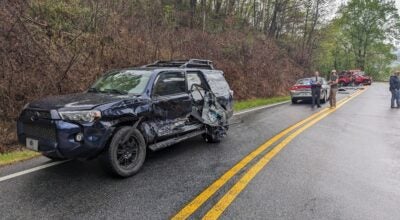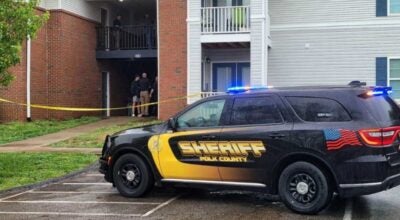NC Overdose Prevention Project celebrates two years, 766 lives saved
Published 10:00 pm Wednesday, August 5, 2015
August 1, 2015 marks the second year of the Overdose Prevention Project (OPP), a ground-breaking initiative that has prevented over 766 deaths from opioid drug overdose in North Carolina by distributing a life-saving medicine, naloxone, directly to people at high risk for overdose and their loved ones.
“Each of those 766 people was someone’s child, friend, and neighbor,” says Robert Childs, executive director of the NC Harm Reduction Coalition. “Not only does our program offer second chances to people who struggle with substance use, but we also prevent hundreds of families from enduring the unimaginable loss of a loved one.”
Naloxone is a safe, effective medication that temporarily blocks the effects of opioids in the brain long enough to restore breathing in a person experiencing respiratory failure from an opioid overdose. The North Carolina Harm Reduction Coalition, a statewide nonprofit, began offering naloxone along with overdose prevention training to community members on August 1, 2013, four months after the passage of the 911 Good Samaritan law in North Carolina.
The 911 Good Samaritan law encourages people to seek medical help for an overdose by offering limited immunity for some drug and alcohol offenses. It also grants civil and criminal immunity to anyone who administers naloxone in good faith and allows community-based organizations to distribute naloxone through a special prescription (a standing order) from a medical provider.
Dr. Logan Graddy, medical director for the NC Harm Reduction Coalition, provides the standing order for the agency’s naloxone distribution program.
He says, “My work with the North Carolina Harm Reduction Coalition comes from a deeply held conviction that every person’s life matters. It is a gift and an honor to be part of a team who are saving lives and giving people second chances. I am so proud of the work we do.”
In the past decade overdose deaths have tripled, claiming over 1,100 North Carolinians last year, while nationwide overdose deaths have surpassed auto fatalities as the leading cause of accidental death. Most overdoses are caused by prescription medications, in particular opioid pain relievers such as OxyContin, Vicodin and morphine, but in recent years heroin deaths have risen dramatically.
“Heroin deaths have tripled in North Carolina over the past four years as more people addicted to pain pills seek a cheaper alternative,” said Scott Proescholdbell, head of the NC Injury Epidemiology and Surveillance Unit at the Division of Public Health, at an overdose prevention summit in Chapel Hill July 14, 2015.
“Many of these deaths can be prevented if we succeed at getting naloxone into the hands of people who can use it.”
Despite a limited size and budget, the North Carolina Harm Reduction Coalition has one of the larger community naloxone distribution programs in the country. The nonprofit has handed out over 12,600 kits over the past two years.
Recipients include people who use street drugs, opioid pill users, friends, family members such as parents with a teenage or young adult who is using, staff members at methadone clinics, drug treatment and detox centers, health care professionals, law enforcement and spiritual leaders.
Reverend Michelle Mathis distributes naloxone from her church in Hickory.
“As a Christian minister, I follow the teaching of Jesus,” she says. “Throughout His ministry, He practiced faith-based harm reduction. He met people where they were, regardless of their station in life, regardless of their habits, their behaviors, showed them unconditional love, and how to live a better, less harmful life. We do our best to offer that same hope and health to those who cross our paths and this comes in the form of overdose prevention education and naloxone,” said Mathis.
Mary Rogers, a naloxone distributor in Mebane, N.C., lost both her children to drug overdose, a 27-year-old son in 2012 and a 23-year-old daughter, who died this past April in Raleigh.
“[When my children were struggling with addiction], I had no idea that a drug like naloxone even existed,” says Rogers. “To find out after they are gone that they might be alive today with access to naloxone makes the pain of their loss even more unbearable. Every person that is living the horrific life of a person addicted to heroin should have access to this anecdote; no questions asked and no fear of retribution. If we are truly a compassionate society, then we must do everything in our power to get this medication into the hands of these people before it’s too late. No parent should have to go through losing a child the way that I have lost two of mine. My heart is broken and the only thing that I can do is to try to help others facing this addiction so that their families don’t have to endure the pain that ours has.”
Naloxone is also becoming available to law enforcement departments across the state who can administer it if they arrive at the scene of an overdose before paramedics. Currently 30 departments carry naloxone.
Fayetteville Police Department officers have used naloxone seven times in the past two months, the highest number from a single police department in the state (law enforcement numbers are not included in the official 766 count).
Officer Dale Hockenberry administered naloxone earlier this month to a person who suddenly went limp after law enforcement arrived at the scene of a break-in.
“[The person] lost all color in his face. His eyes rolled back and his breathing became very shallow,” says Officer Hockenberry. “I did a sternum rub and he didn’t respond, so my partner went to get the Narcan [naloxone]. I administered the Narcan in [the person’s] leg and within three to five seconds he became animated again…I swear by [Narcan] now. It works.”
For more information on overdose prevention training or how to receive a naloxone kit, visit http://www.nchrc.org/program-and-services/overdose-prevention-project/.
To see a full breakdown of drug overdose reversal locations, go to:
http://www.nchrc.org/programs-and-services/nc-od-reversals/.
For information on law enforcement departments that carry naloxone, visit:
http://www.nchrc.org/law-enforcement/us-law-enforcement-who-carry-naloxone/
– Submitted by Robert Childs





